Two bikes that have one thing in common: both came with 7 speed HG hubs. Cassettes for those are hard to find, shifters are getting rare and 1x options do not exist. Throw away good hubs and re-lace? No! these hubs can be upgraded to fit modern cassettes – even 1×12 is possible in some cases.
Let’s start with the trekking bike. A Wheeler 700c with a lugged Tange MTB frame (straight gauge), a beautiful paint job and all the braze-ons needed to make it a good touring bike. The Araya rims and Exage hubs were good while chain, chainrings, cassette and derailleurs were completely worn. No wonder with a single chain in 30 years. In additions to frame, fork and wheels, I managed to preserve the brakes and and cranks. For 110mm 5 bolt cranksets, plenty of narrow-wide chainrings are available for small money. The brake levers are STX RC with the STIs chopped off and the L-TWOO A5 is from my parts bin as well as the Microshift Advent cassette. The end result is my son’s everyday bike.
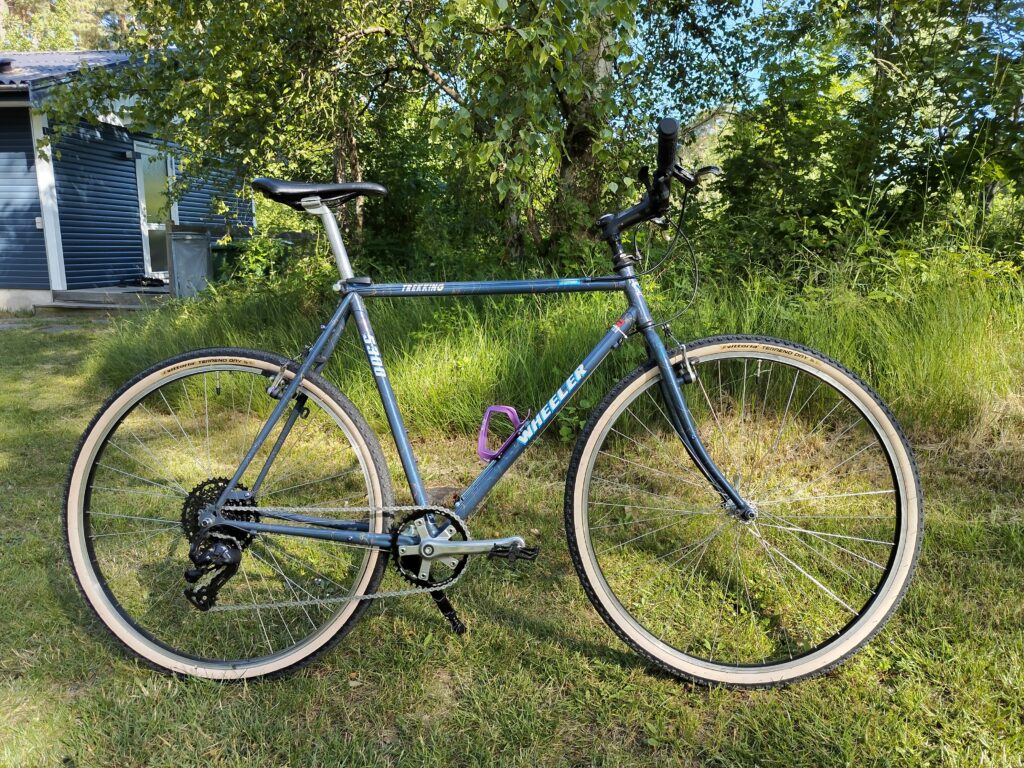
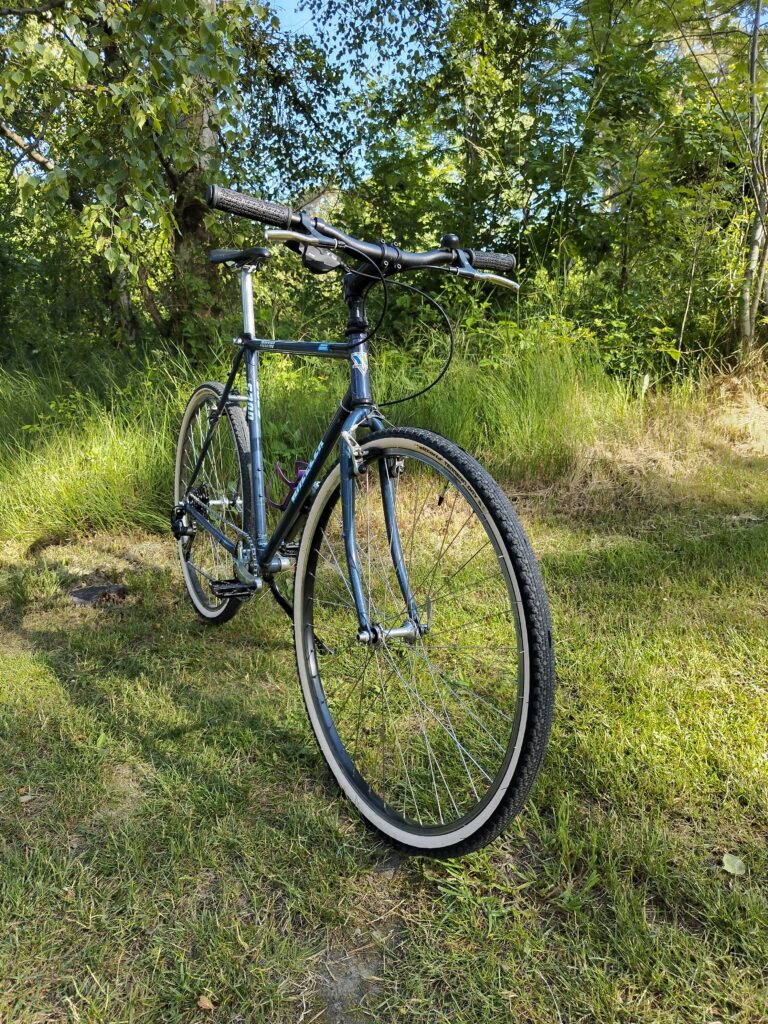
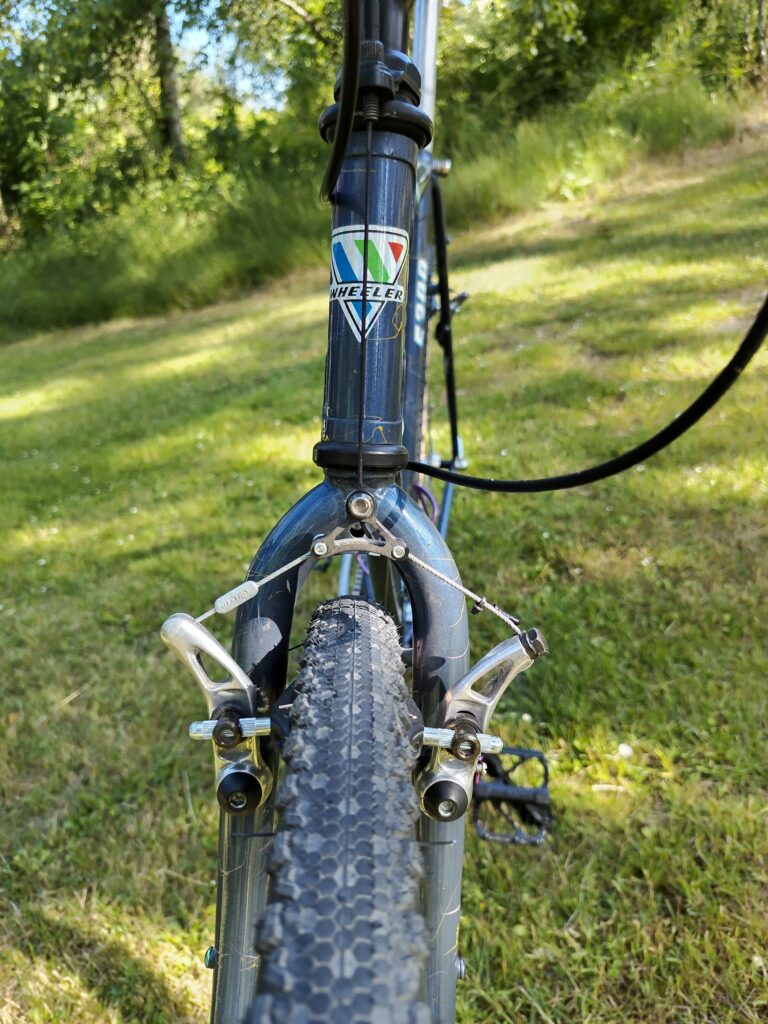
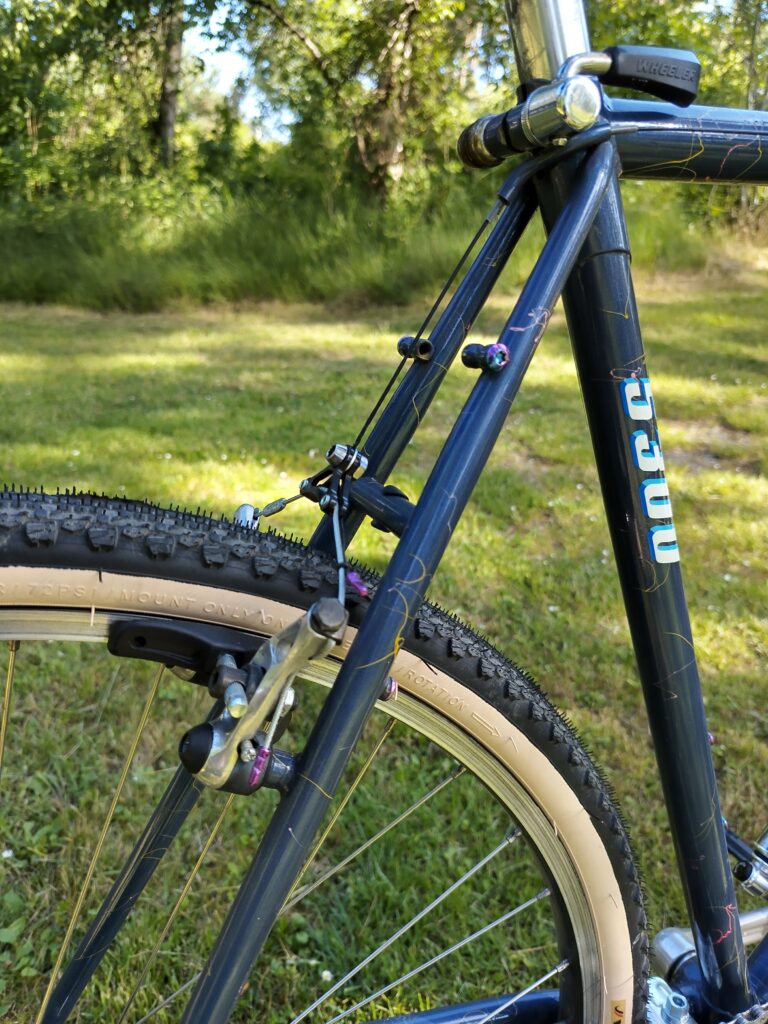
The second bike is a rather classic road bike. This one is most likely from between 1990 and 1992. At that time Gudereit did build many trekking/cross bikes with a bit more tire clearance than traditional road bikes and transferred this to their leisure line of road bikes. Funnily they used “oversized” tubes with traditional lugs, which lead to odd looking fat center sections. This bike uses a powder coating made from castor oil. That stuff is thick and sturdy, but looks still good after more than 30 years.
Here, we opted for a more classical look: 2×9 with the 130mm BCD Exage cranks, a L-TWOO R5 derailleur from the parts bin and new R5 brifters. The front derailleur and the brakes were carried over. 39:30 is much shorter than the 42:25 of the original setup while still sticking to the classic look. My daughter uses this to roam the lakes.
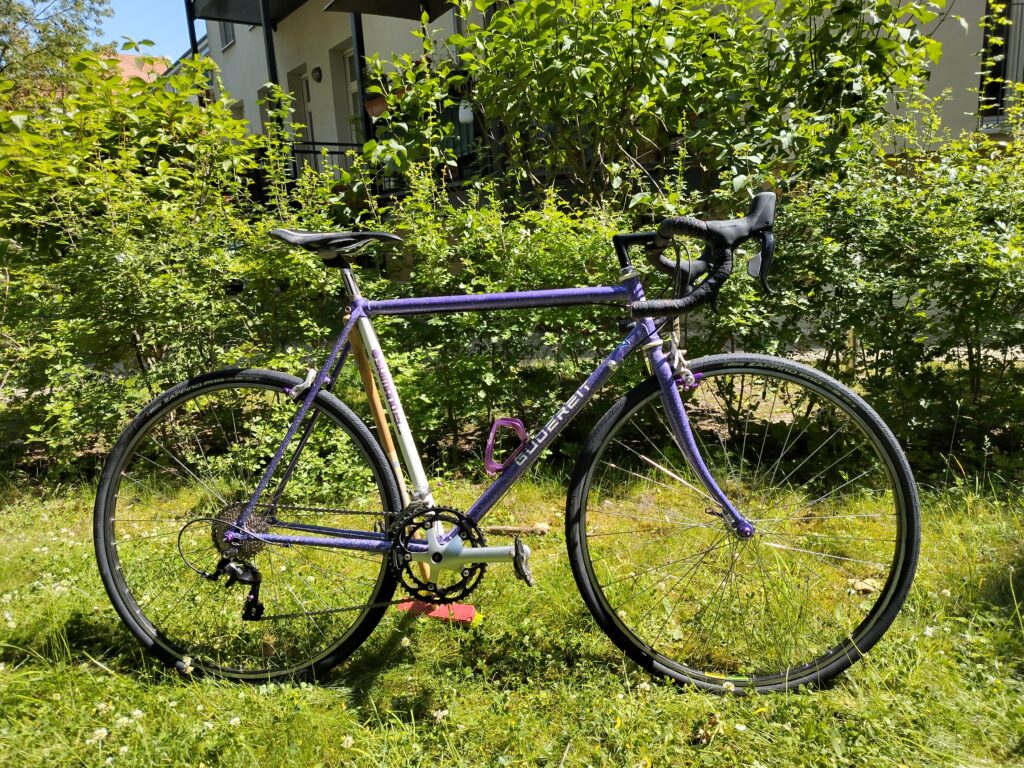
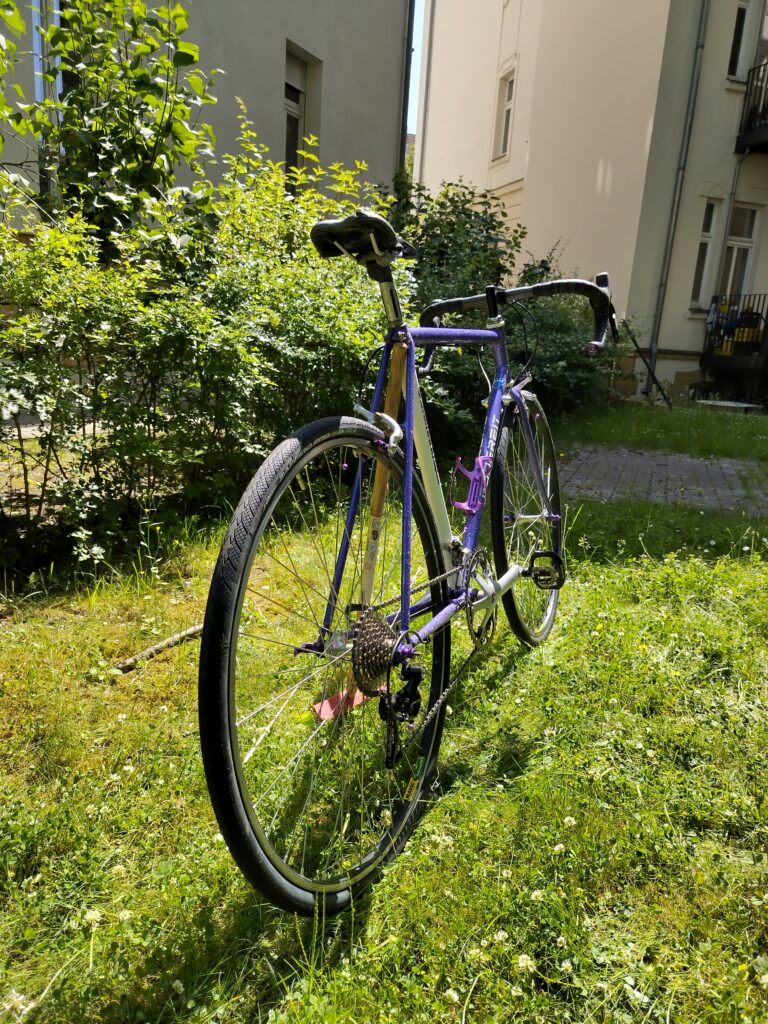
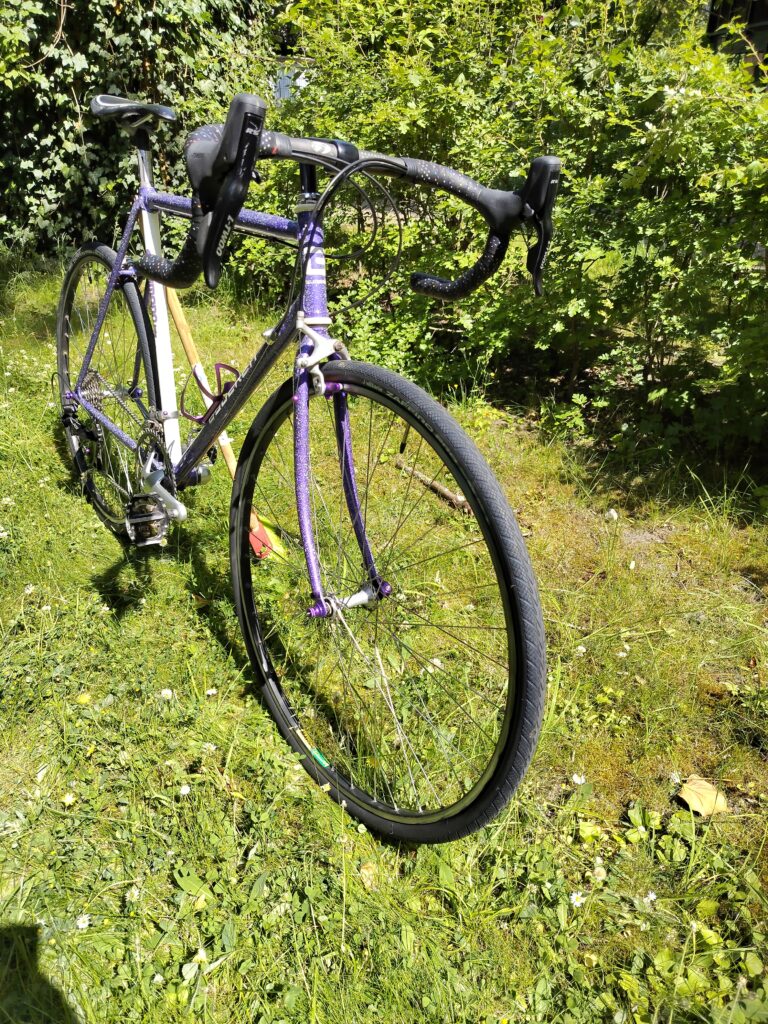
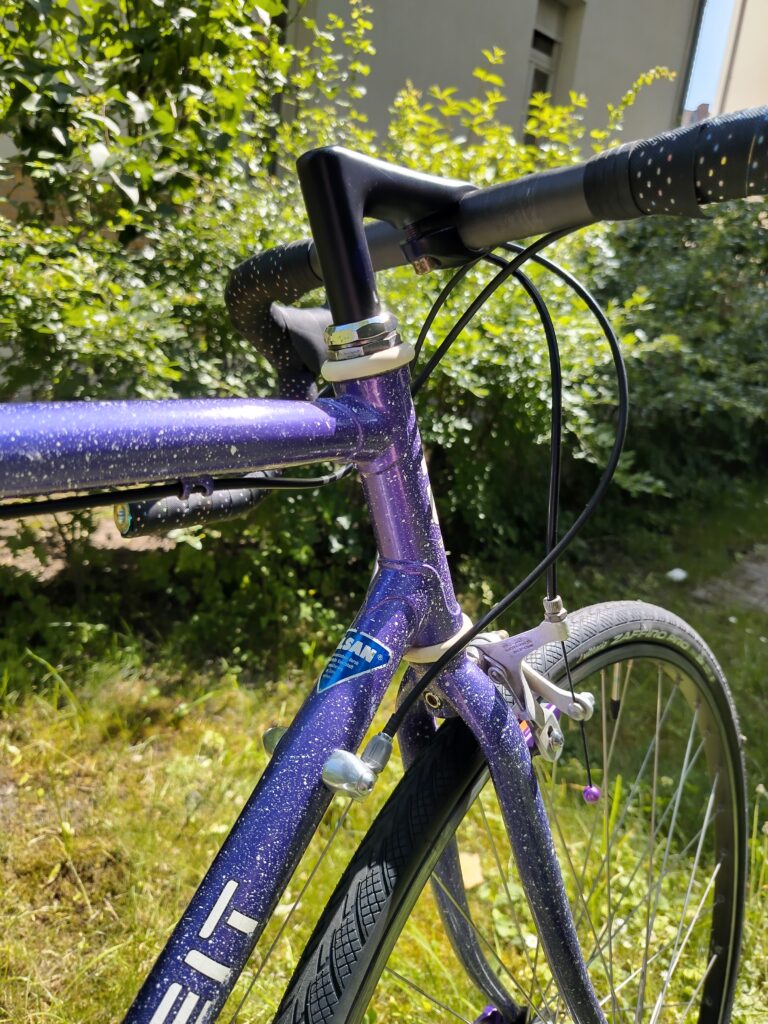
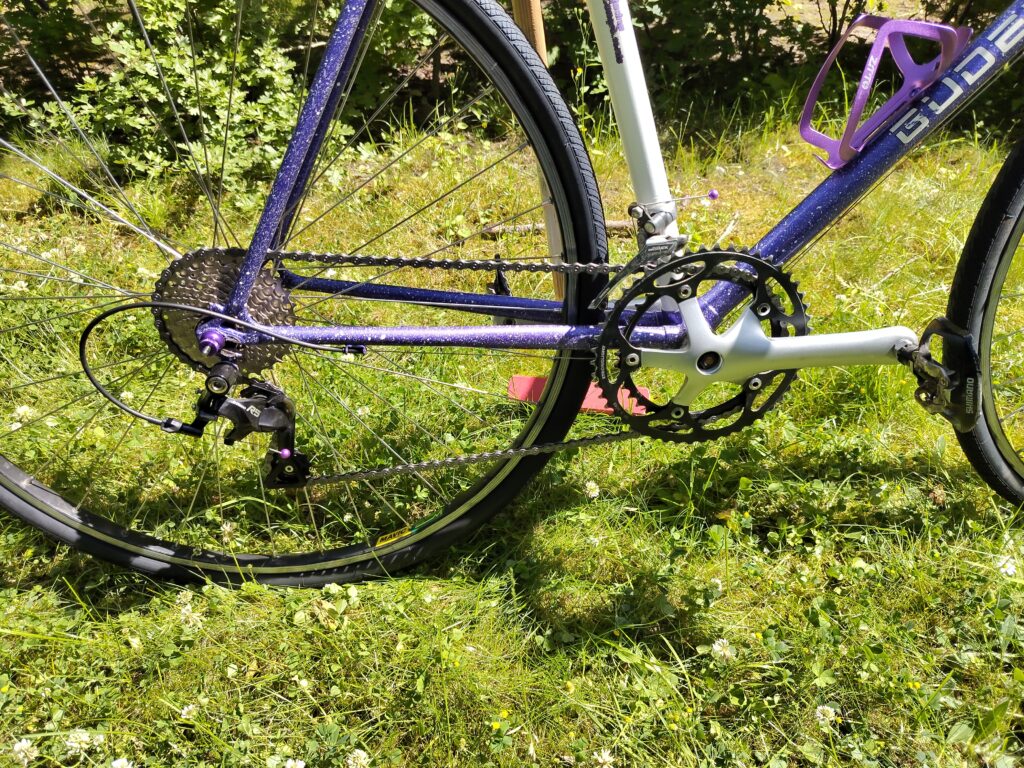
Donor parts and upgrading the hub
Shimano introduced their cassette hubs around 1985. At first, they were 6 speed. Soon they gained narrower gears, Hyperglide and were changed from a locking small sprocket to a separate lock ring. Shimano even managed to maintain some compatibility. For example, it was possible to install a 6 speed Uniglide cassette to a 7 speed Hyperglide body. However, when the compact drive trains arrived around 1993, these cassettes would not fit to the earlier HG bodies. Both of these bikes had such HG bodies, effectively narrowing down the choice of cassettes to 12-28 or 13-30.
Since the interface between the hub and the freewheel body is the same, a modern 8 speed body can be mounted to an old hub. I usually ask my dealer to lay aside some bent wheels with 8 or 9 speed hubs, since these surely fit. There are some exceptions: The first XTR, Dura Ace and Ultegra 8 speed do not accept the 11 teeth small sprockets, but it is unlikely that you will have such a hub as a donor. The first XTR and XT 10 speed are actually 1.0mm narrower than current 8/9/10 (and 11 mountain) cassette bodies, because Shimano tried to take the dishing into account. These are useless nowadays. And 11 speed road is 1.85mm wider than 8/9/10 and thus only usable on 130mm and 135mm hubs.
The third photo shows the 10 spline interface most Shimano hubs from Japan and Malaysia use. There is another, easier to machine interface some China hubs use. These are also available in 7 and 8 speed, but far less common. First, the donor and receiver hubs have to be disassembled. After removing the axle, use a chain whip and a 12mm Allen wrench to disassemble the donor:
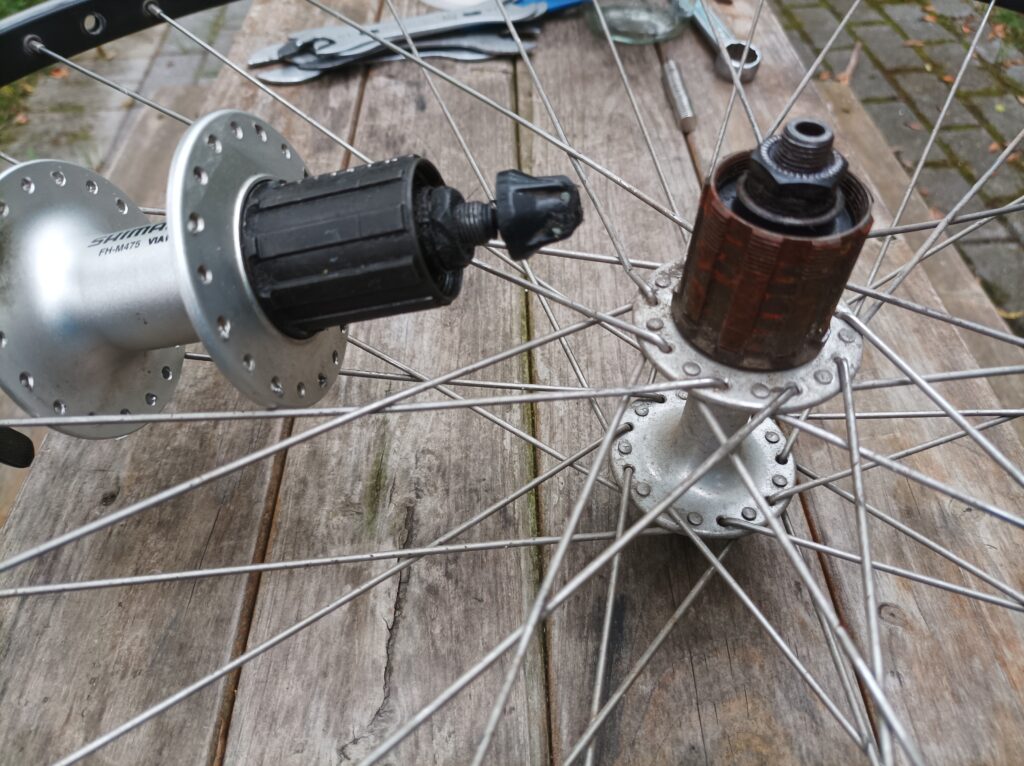
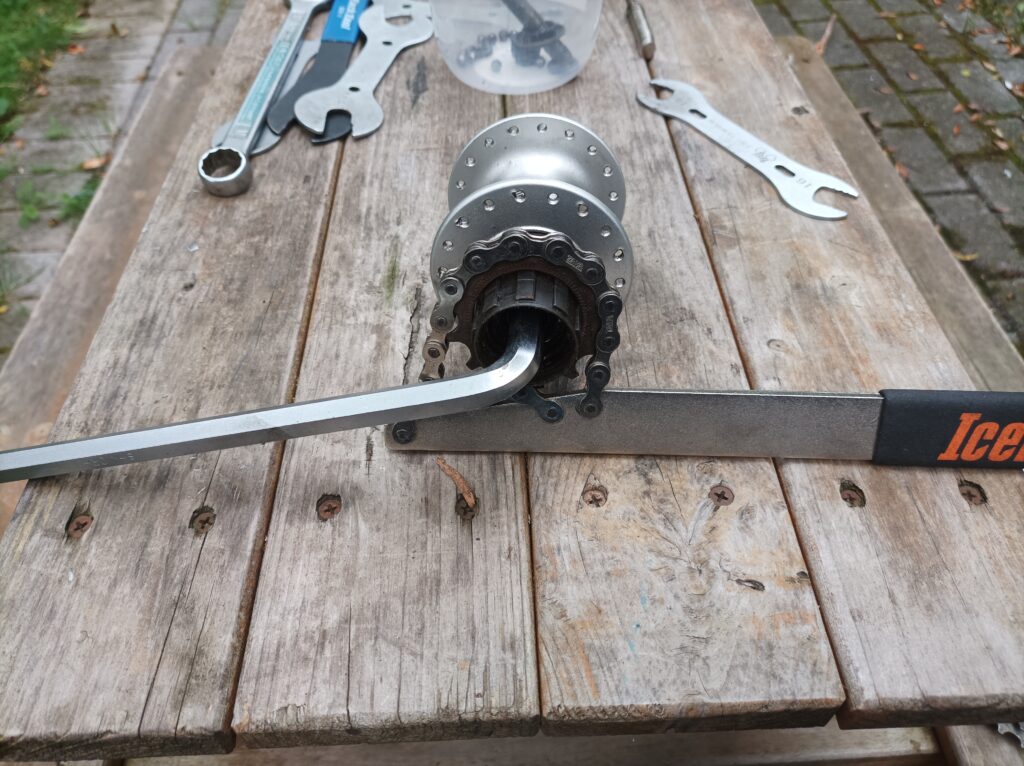
Interfaces match, the 3mm wider body is clearly visible:
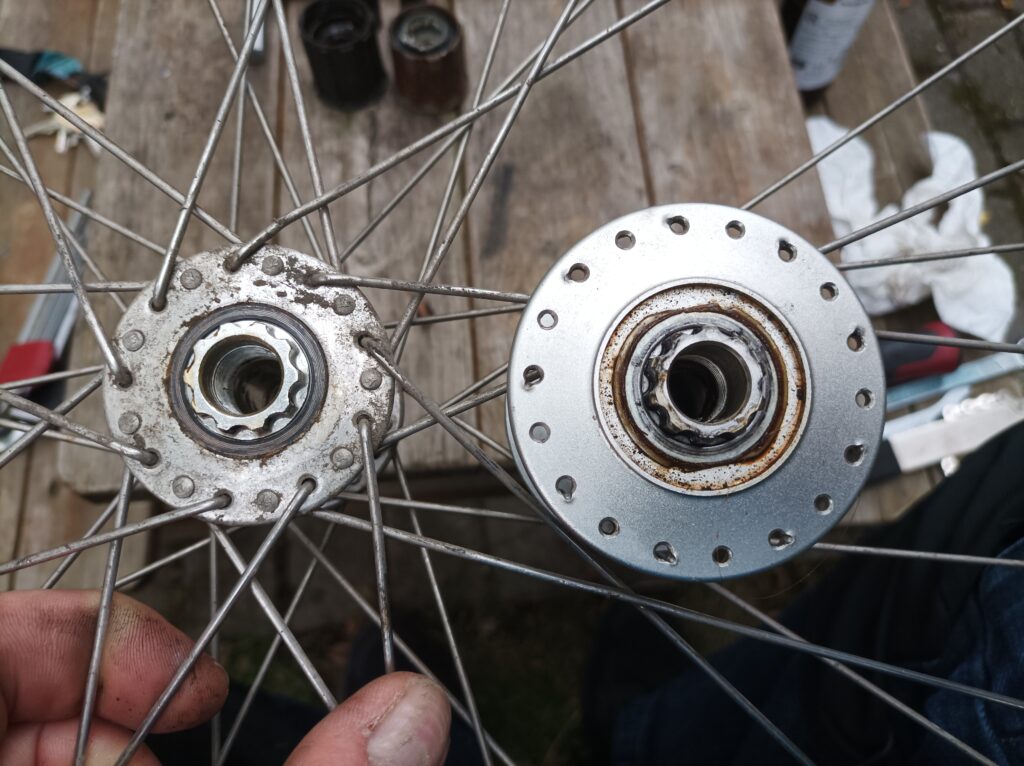
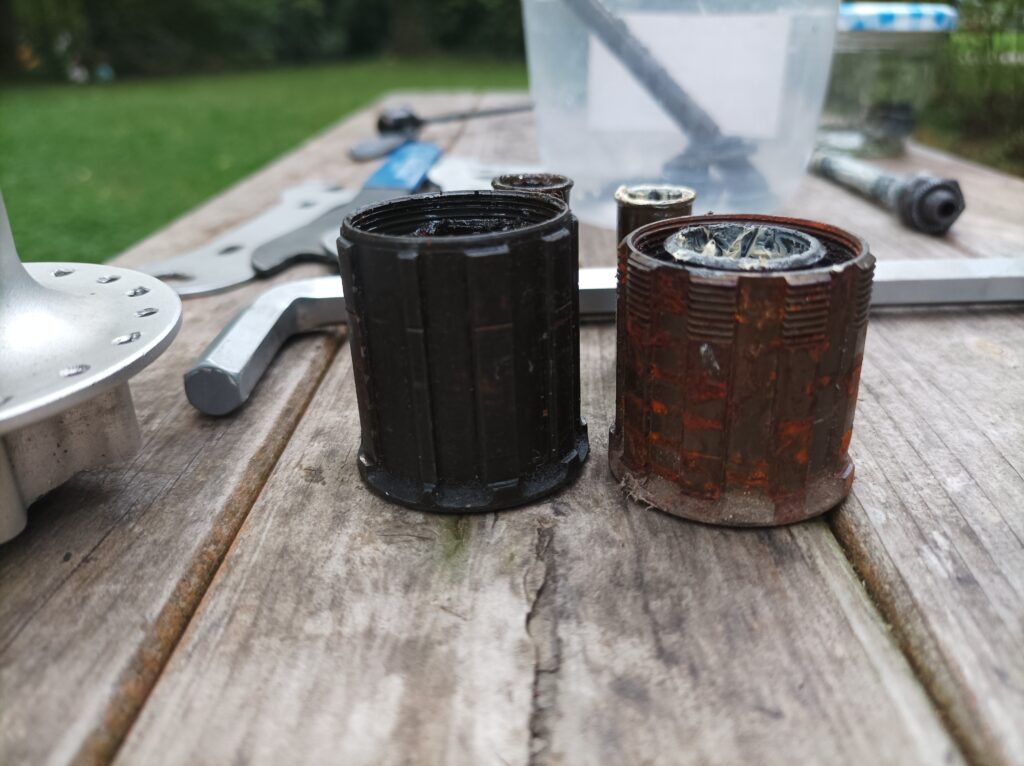
When reassembling, use the cone and spacers from the donor hub on the right side. You might need to remove one spacer on the left side or replace a wide spacer by a narrower spacer.
After assembling, the wheel has to be re-dished, the spokes on the left side have to be loosened a bit, the spokes on the right side have to be tightened. In case of the Wheeler trekking, both the donor and the receiver hub were 135mm, so the re-dishing did not result in significantly steeper spokes. The Gudereit had a 126mm hub, that is now effectively 128mm, still the spokes are relatively steep. For a light weight rider, this poses no problem, but it remembers us why the first 8 speed road drive trains meant the step to 130mm hubs.
By the way: With the Gudereit, the method could not keep its promise. There seems to have been a dropped chain more than once, so I re-laced the rear wheel with new spokes. Of course, I still managed to keep the 36 hole Mavic rim and the Exage hub.
Leave a Reply